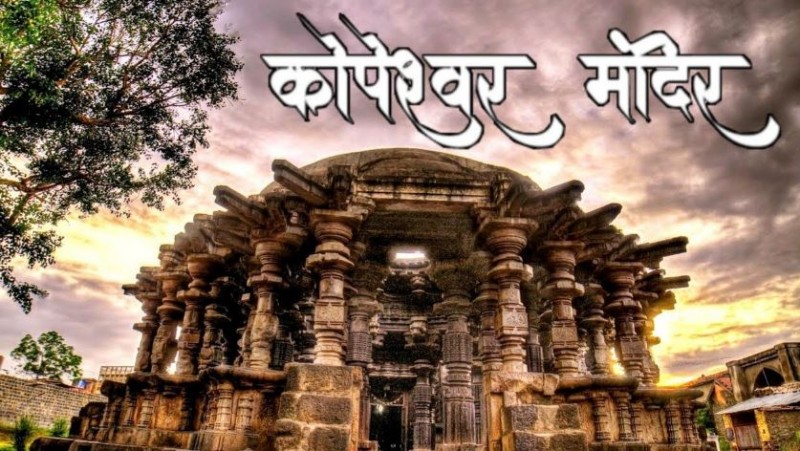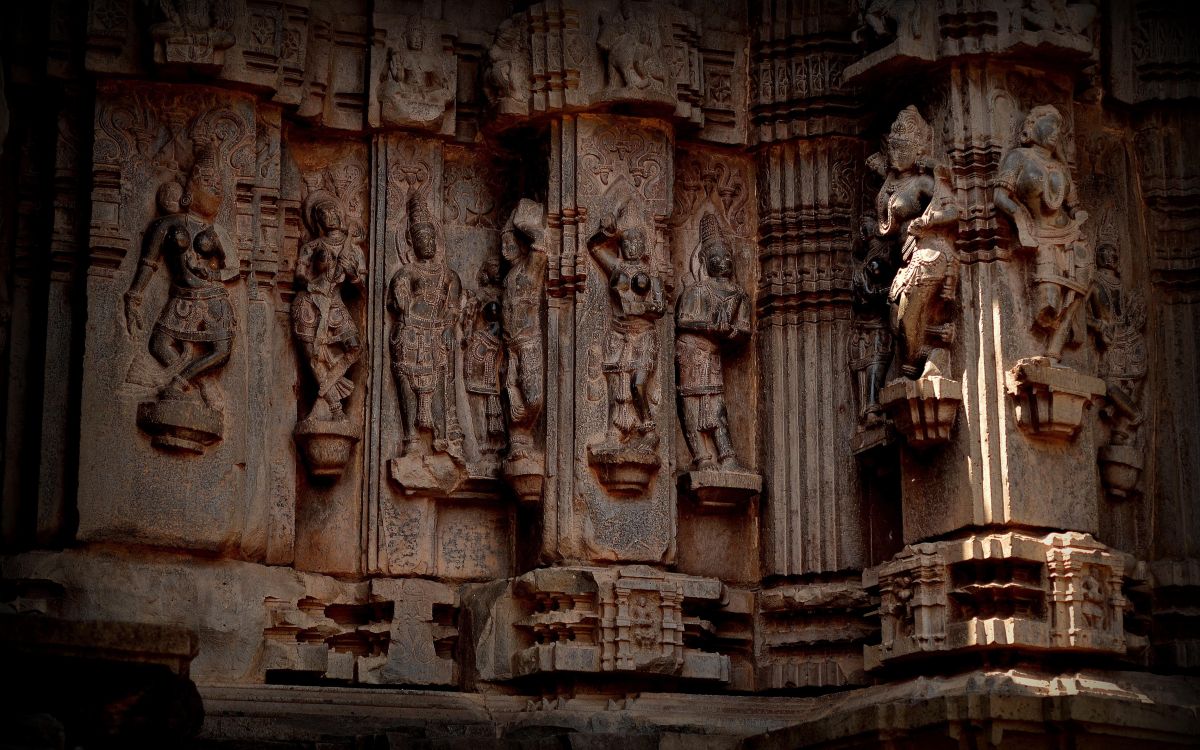
Indian history is a treasure trove of architectural marvels that transcend time and showcase the rich heritage of the country. While the Taj Mahal is undoubtedly a famous symbol of architectural excellence, there are many more such symbols in Bharat that are scattered all over the country. One such notable structure is the Kopeshwar Mahadev Temple in Maharashtra, which stands as proof of the glorious traditions of ancient Indian Vedic architecture. Situated on the banks of the Krishna River in the ancient city of Khidrapur in Maharashtra, the Kopeshwar Mahadev Temple is a magnificent example of craftsmanship and foresight that existed during the era of the Vedas. Built during the 12th century AD, this temple is dedicated to Lord Shiva and displays an excellent blend of architectural styles, reflecting a mix of Chalukya, Rashtrakuta, and Hemadpanti architecture. The awe-inspiring structure of the temple displays intricate carvings, ornate sculptures, and carefully designed elements. The huge spire (shikhar) dominates the facade of the temple, reaching towards the sky with its intricate details and architectural symmetry. The temple complex consists of a mandapa (hall), ardhmandapa (vestibule), and garbhagriha (sanctum sanctorum) where the presiding deities are revered.
The interior of the temple is adorned with intricate carvings depicting scenes from Hindu mythology, including gods and goddesses, divine beings, and various divine expressions. The walls testify to the artistic skills of the artisans of that era, displaying the astonishing interplay of light and shadow. The stone pillars equipped with excellent details provide structural support and enhance the overall grandeur of the temple. The Kopeshwar Mahadev Temple is a symbol of the rich tapestry of India's history, where diverse cultural influences created extraordinary architectural marvels. Its architectural style echoes the deep influence of the Chalukya and Rashtrakuta dynasties, showcasing their unique artistic and architectural contributions. The Kopeshwar Mahadev Temple in Maharashtra is a stunning example of ancient Indian Vedic architecture that developed in the subcontinent.
Legend about Kopeshwar Temple:
There is also a mythological legend about the Kopeshwar temple. According to the legend, when Mata Sati sacrificed her body by jumping into the fire pool, Shiva became very angry and started dancing with the burning body of Mata Sati. In such a situation, Lord Vishnu had to come to earth to calm his anger. This is the same place where Lord Shiva's anger had calmed down...
Architectural Wonders of Kopeshwar Temple:
The Kopeshwar Temple in Khidrapur is a real marvel of architectural brilliance. It displays the distinctive features and design elements of the Chalukya style. Intricate carvings, elaborate sculptures, and intricate details adorn the walls, pillars, and ceilings of the temple. The harmonious blend of complex craftsmanship and structural integrity is a testimony to the skill and foresight of the artisans of that era.
Historical importance:
Built during the reign of King Gandharaditya in the 12th century, the Kopeshwar temple holds immense historical significance. It represents the cultural and religious patronage of the Shailahara dynasty, which flourished in the region during that period. The temple's dedication to Lord Shiva reflects the profound religious and spiritual beliefs of that time.
Architecture:
The architecture of the Kopeshwar temple has many remarkable features that make it worth visiting. The entrance of the temple is adorned with intricately carved doors, depicting mythological beings and divine figures. The sanctum sanctorum has a beautifully sculpted lingam, symbolizing Lord Shiva, while the surrounding walls have panoramic sculptures of various deities and divine beings. The interior of the temple is a wonderful display of sculptural mastery, including intricate carvings depicting scenes from Hindu mythology and the celestial world. Every inch of the temple is adorned with ornate carvings, which include intricate floral patterns, divine beings, and mythical creatures.

Visits to Kopeshwar Temple:
For those who are fans of architectural splendor and cultural heritage, a visit to the Kopeshwar Temple in Khidrapur is a must-visit. Situated in a serene environment on the banks of the Krishna River, this temple offers a peaceful and enchanting atmosphere. Visitors can be surprised to see the intricate carvings, immerse themselves in the spiritual atmosphere, and learn about the rich history of the Chalukya dynasty.
The Kopeshwar temple at Khidrapur is an extraordinary testimony to the architectural brilliance of the Chalukya dynasty. Despite not gaining widespread fame, this hidden gemstone attracts visitors with its intricate carvings, elaborate sculptures, and historical significance. This temple is reminiscent of the rich cultural heritage that once flourished in the region. As tourists explore its corridors and admire its architectural splendor, they go back in time, gaining a deep appreciation for the artistry and craftsmanship of ancient civilizations.
There is no vehicle of Shiva in this temple:
How can it be that there is a temple of Shiva and Lord Nandi is not there, but this is the case in this temple. There is no Nandi in this temple, not because there is a mistake in making them. There's a reason they're not here. At the time of the incident, Nandi, along with Sati, had gone to his father Daksha's residence. That is why they were not present here. It is believed that Daksha's residence was in Kankhal in Haridwar, but the residents of Maharashtra believe that he was in Yadur village, a few kilometers away from the Krishna River. Nandi, located within the Veerabhadra temple of this village, seems to be looking towards this Kopeshwar temple.
There are two Shivalingas in the temple:
There are two lingas in the temple. One linga is in the form of Lord Shiva, and the other linga is in the form of Vishnu calming his anger.
The moon is in the middle of the heavenly pavilion:
The Swarga Mandap of the Kopeshwar Temple was constructed keeping in mind the direction of the moon on the day of Kartik Purnima. This is done once a year. There are two times when the moon is in the middle of the heavenly pavilion. Surprisingly, this happens only on Kartik Purnima.
The Significance of Bells in Temples: Unveiling Their Musical Charm
Shirdi Sai Baba: His Teaching and Practices
The Great Pyramid of Giza: A Marvel Aligned with the Cardinal Directions